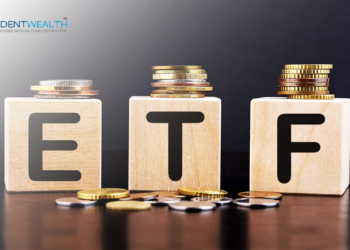A recent headline by the WSJ, “To save money, maybe you should skip breakfast,” caught the eye of Twitterati, but the article actually sheds light on the rising food prices across and the economic overlook of USA. The inflation data was quite high in the month of January, but for February, there is some relief. The annual inflation rate for the month of February was 6%, which is in line with the market forecast and down from the earlier month. The cost of energy and food, which was quite high in the month of January, increased at a slower rate in February.
While inflation remains a major concern for the US economy, another troubling situation that happened in the US was the collapse of the Silicon Valley Bank (SVB). The bank was crippled in 48 hours under the pressure of high withdrawals, which it was unable to meet due to an asset-liability mismatch, a classic case of a bank run. Although the FED and FDIC have assured that money will be returned to depositors in order to strengthen public confidence in the US banking system, it cannot be ruled out that many of these banks will be under pressure.
In the Eurozone, consumer prices were up 8.5% in February, down from a peak of 10.6% in October and the lowest since May 2022, but well above the European Central Bank’s target of 2.0 percent.
China’s inflation rate has decelerated sharply; the economy grew by 3% for FY22, missing the national target of 5%, and for FY23, they have set a modest target of around 5%, which is the lowest in a decade.
However, in Japan, the inflation rate is on the rise. The annual inflation rate in Japan rose to 4.3% in January 2023 from 4.0% in the prior month. This was the highest reading since December 1981.
Well, there are several factors contributing to inflation in different nations, but by and large, supply chain disruption due to the Russia-Ukraine war is one of the most common and major reasons.
In India, retail inflation slowed down to 6.44% in the month of February, compared to 6.52% in January. The inflation rate stayed above the Reserve Bank of India a target of 2-6% for a second consecutive month. The biggest contributor to such rises was the cost of cereals and spices. Consumer confidence, which is published by the RBI, saw an uptick for the month, suggesting higher confidence by the Indian household in the economy. Although consumption remains below the pre-pandemic level, urban demand witnessed growth, whereas rural demand lagged.
The good news is that economic activity in India is at an all-time high, and capacity utilization is above its long-term average. The PMI data suggests stronger momentum across the manufacturing and service sectors. The government’s focus on capital expenditure will further boost demand and generate employment; private capex is also likely to follow.
As we inch towards the midpoint of this year, we might encounter an unwanted guest knocking at our door, and it is said to bring along with it a poor monsoon, which is going to affect the agriculture sector. The effect of EL Nino can be observed across the country as temperatures soar. Poor Rabi and Kharif crop output can push food inflation further up and delay rural demand recovery. Lastly, higher temperatures will lead to higher power demand, which could add to higher coal imports and inflation woes for consumers.
The equity market will witness volatility in the near term, although the market is undergoing time correction, and the valuation remains elevated when compared to other emerging markets. Nifty, however, appears to be fairly valued when compared to its long-term average. On the sectoral front, banking and auto look good for the near term, whereas infrastructure can be a good bet for the medium to long term. Mutual fund investors can prefer investing in Flexicap funds, which will provide diversification benefits at the same time, help the investors surf market volatility.
On the other hand, the debt market looks attractive, considering the current yield, which offers a great return. The yield curve has mostly flattened, which presents a better opportunity in the 3–7 year segment. Further, no rate cuts are expected this year, but as soon as rate cuts start, debt investors will benefit the most. For the short term, investors can invest in low-duration funds, while medium-term investors should prefer a short-term debt fund or a dynamic bond fund.
For more information, reach us at support@prudentwealth.in
Get your copy of PW INSIDER now!
Read Next: Millet goes mainstream: Why this ancient grain is making a comeback?











